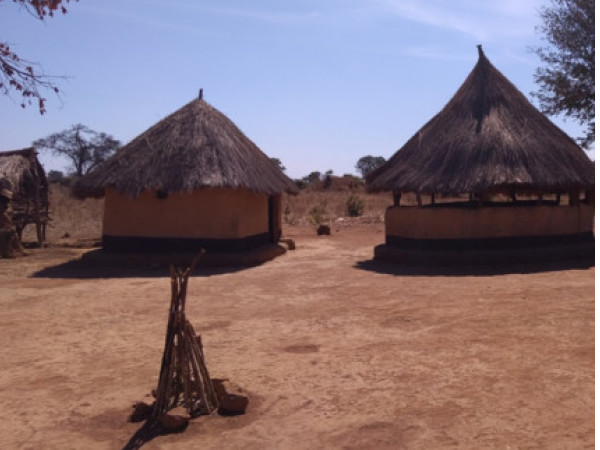Zambia drought
12 November 2019

Aisling Gallacher, SCIAF's Programme Officer, opens up about the devastation that her recent trip to Zambia portrayed: crops are failing, families are struggling to feed their children, and because of this, there is an increase in forced marriage.
A version of this story appeared in The Herald this week.
Three meals a week. An 11km walk to reach water. Families feeling forced to offer their 15-year-old daughters for marriage because they cannot afford to feed them themselves.
This is the grim reality of life in Zambia during the worst drought since the 1980s. The rains didn’t come this year, leaving the landscape brutally dry and fields parched. Crops failed, yields were far lower than expected. Now people are desperate.

I visited the southern African nation in August, during what should be a time of plenty. In a good year, farmers’ crops stores would be full from the harvest, providing them with enough food to see them through the lean months ahead.
This year the crop stores were empty. While Zambia is prone to droughts, many people I spoke to said they haven’t seen anything like this in their lifetime.

A farmer we supports called Benson, who grows organic vegetables, told me he normally has access to water all year round. This year his source has dried up, meaning his maize crops failed. He tried to dig down further into the ground to access more water but he hit hard rock, which was impenetrable with the basic tools he had. He now faces a three hour walk to the nearest water source.

Like Benson, Alice also now faces a long walk to reach water. Seven of her ten children still live at home, while she also cares for three orphans. The small stream they currently use for water is expected to dry up in the next couple of weeks. The next available water source is 10km away, but the quality is poor, meaning it will need to be boiled before it can be used. The family need three buckets of water per day, making the task of collecting it long and arduous.
These stories were just a couple among many, of people who don’t know how they will have enough food to get them to the next harvest. Communities have already dramatically cut down on the amount of food they’re consuming, with three meals per becoming the norm for some. Families have resorted to eating wild fruits to sustain them, and burning grass to catch mice. Child marriage has been an unwelcome side effect of the drought, with some feeling they have no option but to marry off their teenage daughters as they cannot afford to feed them, in the hope that if they’re married they will be fed. The next harvest in months away, so the situation will not get better any time soon.

We have been working in Zambia for many years, funding livelihoods projects to teach people skills to earn a living, like sustainable farming methods. However, recently the projects have been forced to switch from development to humanitarian activities - you cannot teach people how to farm when there are no crops.
SCIAF has pledged £50,000 to support the emergency response via our local partners in Zambia. Our relevant Scottish Government-funded programmes have also been adjusted to support emergency measures. This means around three thousand people are receiving food, or where there isn’t enough food to give away, others will receive financial help to buy some. Plans are underway to help more. Shallow wells will also be dug to try to mitigate the impact of the drought, and give more families easier access to water.
But the drought has increased the isolation of already vulnerable communities. The price of maize has doubled. While there is food available in some areas, many who haven’t been able to grow their own this year simply cannot afford to buy it. It has caused the gap between the poorest and the more stable households to widen, as stable households have the resources to cope with the lack of water.

The situation is made more challenging because the Zambian government has not declared an official emergency which has made it difficult to get global funding to respond. International aid organisations could use their funding for emergencies, local groups would have access to more resources and there would be more people on the ground to deliver aid. Until this happens, charities like SCIAF are doing what we can. But it’s not enough.
In the past I have travelled extensively for SCIAF. I have worked in South Sudan, Malawi and Uganda, and I’ve been on difficult trips where I’ve met people who are suffering terribly. But I have never before been so profoundly affected by a trip. This was the first time it had been so hard to find something positive, and to not come away with a sense of hopelessness. Normally the positive impact of SCIAF’s projects is plain to see, but this drought has severely restricted any progress from being made. People are starving.
There are 2.3 million people in Zambia at crisis stage and desperately in need of help. Limited official meteorological data makes it hard to predict how much worse the situation could get, but there has been below average rainfall for the last three years. If the rains don’t come next year many could be left with no food.
People in Zambia desperately need our help, and it’s our duty as an international community to find a way to provide it.